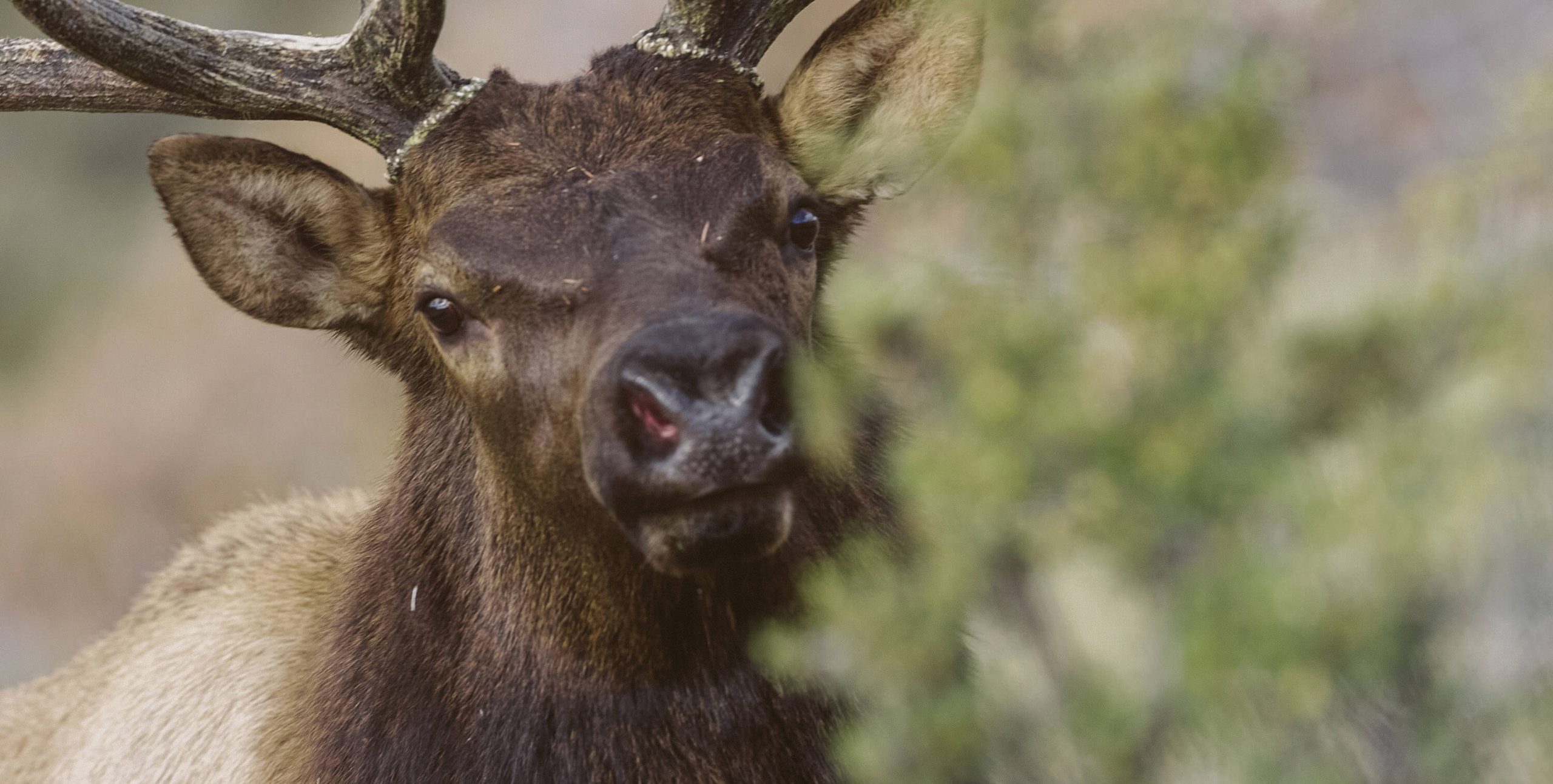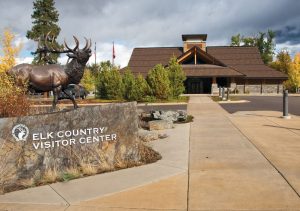
29 May Spotlight: Hunting is Conservation
For more than four decades, the Rocky Mountain Elk Foundation (RMEF) has actively worked to support hunting and conservation efforts throughout Montana and beyond. Protecting habitat and improving access for wide-ranging species — humans included — RMEF is a homeostatic ecosystem in its own right, a marriage of advocacy and action to create balance, supporting the health of all species and the planet they share.

COURTESY OF ROCK Y MOUNTAIN ELK FOUNDATION
Here, Mark Holyoak, RMEF director of communication, shares a glimpse into the organization’s humble beginnings and the ethos that fuels its continued dedication to wildlife and sensitive ecologies around the country.
BIG SKY JOURNAL: After more than 40 years and exponential growth since its founding in a doublewide trailer just outside of Troy, Montana, how has RMEF evolved?
MARK HOLYOAK: RMEF began as a mere lightbulb moment for four northwest Montana elk hunters and blossomed into a conservation movement that has positively impacted elk, moose, whitetail and mule deer, pronghorn antelope, black and grizzly bears, mountain lions, and many other species across the country. Since 1984, RMEF has worked alongside partners to conserve or enhance more than 9.1 million acres of habitat as well as open or improve public access to more than 1.6 million acres.
RMEF also supports wildlife management and hunting, ensuring the future of elk, other wildlife, their habitat, and our hunting heritage. Our volunteers are the standard-bearers of conservation, planning and hosting fundraising banquets and other events in Montana and across the United States. RMEF couldn’t do what it does without their dedication.

Over its four-decade history, RMEF has supported a wide range of hunting-related sports as well as the National Archery in the Schools Program, outdoor conservation camps, veteran hunts, and scholarship funds for budding wildlife management professionals. | COURTESY OF ROCK Y MOUNTAIN ELK FOUNDATI
BSJ: How are hunting and conservation — the two pillars of RMEF’s identity — related?
HOLYOAK: Hunting is undeniably linked with conservation: In line with the North American Model of Wildlife Conservation, it’s the main tool used by biologists and wildlife managers to successfully manage wildlife populations.
Hunting also supplies critical funding for conservation. In 1937, hunters supported the establishment of an 11-percent excise tax on guns, ammunition, and archery equipment that has since generated nearly $18 billion for land and wildlife conservation. Hunters also pay $896 million annually for state licenses and fees, which goes toward conservation. It’s also important to note that 60 percent of the budget funding for state fish and wildlife agencies, which are tasked with wildlife management, is paid for by hunter- and angler-generated funding.
BSJ: What projects does RMEF helm, and how have they impacted ecosystems across Montana and beyond?
HOLYOAK: RMEF fulfills its mission through five core programs: land conservation and access, habitat stewardship, wildlife management, hunting heritage, and advocacy.
Land Conservation and Access
RMEF works with partners to conserve quality elk range, migration corridors, winter range, and calving areas through land acquisitions, voluntary conservation agreements (or conservation easements), and contributions. For a 2022 central Montana project that created the 5,668-acre Big Snowy Wildlife Management Area, RMEF worked with Shodair Children’s Hospital to acquire the land and convey it to Montana Fish, Wildlife & Parks, protecting the habitat and opening public access for hunting and other recreational activities.
Habitat Stewardship
RMEF and its partners provide financial support to carry out prescribed burning, forest thinning, noxious weed treatments, wildlife water developments, and other projects to enhance quality habitat (food, water, cover, and space), which is essential to ensuring the future of elk and other wildlife.
Wildlife Management
RMEF engages in wildlife issues of local, regional, and national concern and ensures the scientific integrity of mission programs. Inclusive of this effort is addressing critical wildlife issues and hunter interests, such as disease, predator management, population dynamics, elk ecology, migration corridors, and winter range. In 2024 alone, RMEF supplied more than $1 million, leveraging $5.8 million in partner dollars, for 21 studies in nine states, including three in Montana and three others of national relevance.
RMEF also helped restore wild, free-ranging elk to their historic range in West Virginia (2016), Virginia (2012), Missouri (2011), North Carolina (2001), Tennessee (2000), Ontario, Canada (1998), Kentucky (1997), and Wisconsin (1995).
Additionally, RMEF recently compiled a wildlife-friendly fencing guide to help reduce or remove barriers for big-game species to move more easily across the land.
Hunting Heritage
As aforementioned, RMEF has supported more than 6,200 programs nationwide aimed at engaging thousands upon thousands of participants in hunting-related projects and activities.
Advocacy
RMEF advocates for its mission by working with Congress, federal and state agencies, the judicial system, and state legislatures to track and engage around legislation, regulations, and litigation.
Volunteers can join RMEF to support wildlife of all sizes and species. For more information, visit rmef.org.




No Comments